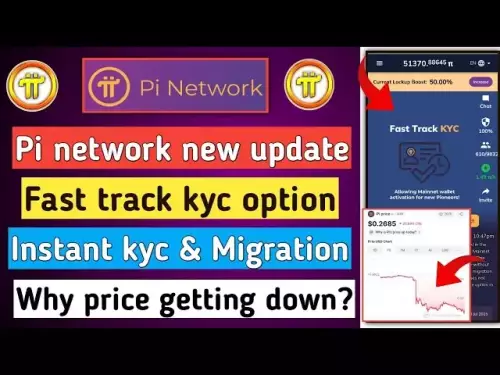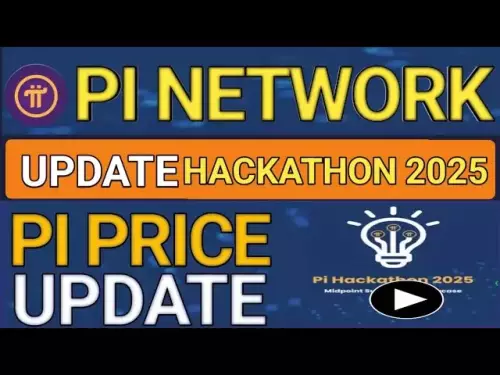-
 bitcoin
bitcoin $109667.069529 USD
-3.03% -
 ethereum
ethereum $3936.685804 USD
-4.07% -
 tether
tether $1.000493 USD
0.01% -
 xrp
xrp $2.771823 USD
-4.74% -
 bnb
bnb $957.805027 USD
-5.34% -
 solana
solana $196.735100 USD
-6.68% -
 usd-coin
usd-coin $0.999727 USD
-0.01% -
 dogecoin
dogecoin $0.227355 USD
-5.12% -
 tron
tron $0.335205 USD
-0.81% -
 cardano
cardano $0.779256 USD
-3.59% -
 ethena-usde
ethena-usde $0.999900 USD
-0.06% -
 hyperliquid
hyperliquid $42.492095 USD
-6.61% -
 chainlink
chainlink $20.501853 USD
-4.34% -
 avalanche
avalanche $28.952606 USD
-11.21% -
 stellar
stellar $0.356038 USD
-3.93%
What key points should I focus on in an NFT project's roadmap?
A strong NFT roadmap builds trust through transparent phases, clear utility, community incentives, security measures, and realistic milestones tied to tangible deliverables.
Aug 08, 2025 at 06:35 am
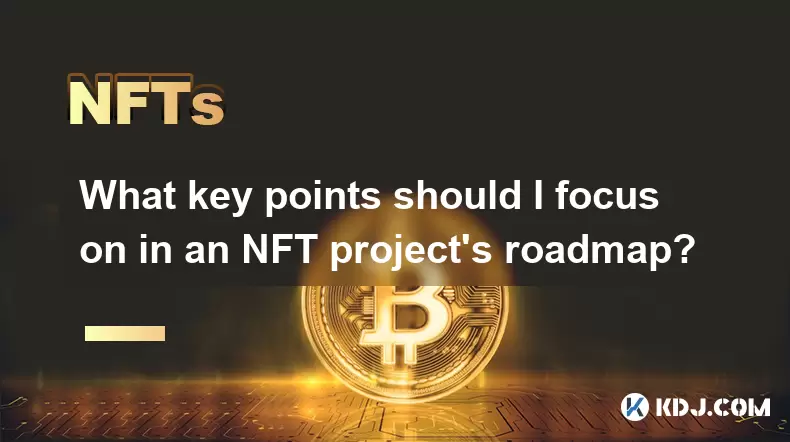
Understanding the Purpose of an NFT Project Roadmap
An NFT project roadmap is more than a timeline—it's a strategic blueprint that communicates the project’s vision, milestones, and value proposition to potential investors and community members. The core purpose of a roadmap is to build trust by demonstrating transparency and long-term planning. A well-structured roadmap outlines not just what will happen, but why it matters. It should reflect a clear understanding of the NFT ecosystem, including utility, community engagement, and technological execution. Without a compelling roadmap, even a visually appealing NFT collection may fail to attract sustained interest.
Phases and Milestones: Structuring the Timeline
A strong NFT roadmap is divided into distinct phases, each with achievable and measurable milestones. These phases typically include pre-launch, launch, post-launch, and long-term development. Each phase should list specific deliverables with estimated timeframes. For example:
- Pre-launch: Community building, whitelist mechanics, and artist collaboration announcements
- Launch: Minting date, gas optimization strategy, and initial distribution plan
- Post-launch: NFT reveal, metadata locking, and secondary market support
- Long-term: Utility rollouts, partnerships, and expansion into metaverse or gaming integrations
Each milestone must be realistic and time-bound, avoiding vague promises like “future updates.” The roadmap should also include progress indicators such as completed, in-progress, or upcoming, often visualized through progress bars or checkmarks.
Utility and Ecosystem Development
One of the most scrutinized aspects of an NFT project is the long-term utility of the tokens. Collectors no longer invest solely in digital art—they expect benefits. The roadmap must detail how NFTs will provide value beyond ownership. This includes:
- Exclusive access to events, merchandise, or future mints
- Staking mechanisms that reward holders with tokens or privileges
- Governance rights, allowing NFT owners to vote on project decisions
- Integration with decentralized applications (dApps) such as games or virtual worlds
For example, if the project plans to launch a metaverse land plot tied to specific NFTs, the roadmap should specify when land deeds will be distributed, how users can access the virtual environment, and what tools will be provided for customization. Clear integration points with blockchain platforms like Ethereum, Polygon, or Solana should also be outlined.
Community Engagement and Incentive Programs
A thriving community is often the backbone of a successful NFT project. The roadmap must include structured community-building initiatives that foster loyalty and participation. These can include:
- Whitelist and allowlist campaigns with transparent criteria
- Referral programs that reward members for bringing in new participants
- AMAs (Ask Me Anything) and live community calls scheduled at regular intervals
- Contests and creative challenges where holders submit artwork or ideas
Incentive mechanics should be clearly defined, including how rewards are distributed (e.g., via smart contracts or manual airdrops) and what tools will be used (e.g., Discord bots, snapshot voting). The roadmap should also indicate how community feedback will be incorporated into development, such as through governance proposals or surveys.
Transparency and Security Measures
Trust is paramount in the NFT space, where scams and rug pulls are common. The roadmap should explicitly address security and transparency protocols. This includes:
- Smart contract audits by reputable firms like CertiK or Hacken, with audit reports linked
- Metadata and IPFS pinning strategy to ensure NFTs remain accessible and immutable
- Team doxxing status—whether core members are publicly identified or remain anonymous
- Multi-signature wallets for treasury management, reducing single points of failure
Additionally, the roadmap should clarify how funds raised during minting will be allocated. A breakdown such as 40% for development, 20% for marketing, 15% for team, and 25% for ecosystem rewards adds credibility. Any vesting schedules for team tokens should also be disclosed to prevent sudden dumps.
Marketing and Partnership Strategy
Visibility in a saturated market requires a well-planned marketing approach. The roadmap should outline key promotional activities and strategic collaborations. This includes:
- Influencer partnerships with crypto-native content creators
- Cross-project collaborations such as NFT giveaways with complementary brands
- Media coverage plans involving crypto news outlets like CoinDesk or NFT Now
- Launch events on platforms like Zoom, Twitter Spaces, or virtual galleries
Each marketing initiative should be tied to a phase in the timeline. For instance, influencer teasers may occur during pre-launch, while post-launch efforts focus on user-generated content campaigns. The roadmap should also mention KPIs (Key Performance Indicators) such as Discord growth targets or social media engagement benchmarks.
Frequently Asked Questions
How detailed should an NFT roadmap be?An NFT roadmap should include specific milestones with estimated dates, deliverables, and responsible teams. Avoid overly broad statements. Instead of saying “expand utility,” state “launch staking portal by Q3 2024 with 5% APY rewards distributed weekly via smart contract.”
Should a roadmap include risks or contingencies?Yes. A credible roadmap acknowledges potential delays or challenges. Including a section on risk mitigation—such as backup development teams or alternative launch platforms—shows preparedness and builds investor confidence.
Can a roadmap be updated after launch?Absolutely. Projects often adjust timelines due to technical issues or community feedback. Any updates should be communicated transparently through official channels, with changes clearly marked and justified to maintain trust.
Is it necessary to lock smart contracts before minting?While not mandatory, contract locking is a best practice. It prevents the team from altering critical functions post-launch, such as mint prices or token supply. Projects that lock contracts and publish proof (e.g., via Etherscan) are viewed more favorably by the community.
Disclaimer:info@kdj.com
The information provided is not trading advice. kdj.com does not assume any responsibility for any investments made based on the information provided in this article. Cryptocurrencies are highly volatile and it is highly recommended that you invest with caution after thorough research!
If you believe that the content used on this website infringes your copyright, please contact us immediately (info@kdj.com) and we will delete it promptly.
- Serie A Fantasy Football: Round 25 - Your Winning Picks!
- 2025-09-26 22:25:13
- Ethereum Liquidations & MAGAX Presale: Navigating Crypto's Choppy Waters
- 2025-09-26 22:25:13
- BlockchainFX: Why Whales Are Diving into This Crypto Presale
- 2025-09-26 22:30:01
- BNB, Hyperliquid, BlockchainFX: Navigating the Crypto Landscape in 2025
- 2025-09-26 22:30:01
- MIRA Price Surges Amid Binance Campaign and Mainnet Launch: What's the Buzz?
- 2025-09-26 22:30:01
- Cipher Mining, Convertible Notes, and Prices: Decoding the Crypto Landscape
- 2025-09-26 22:30:15
Related knowledge
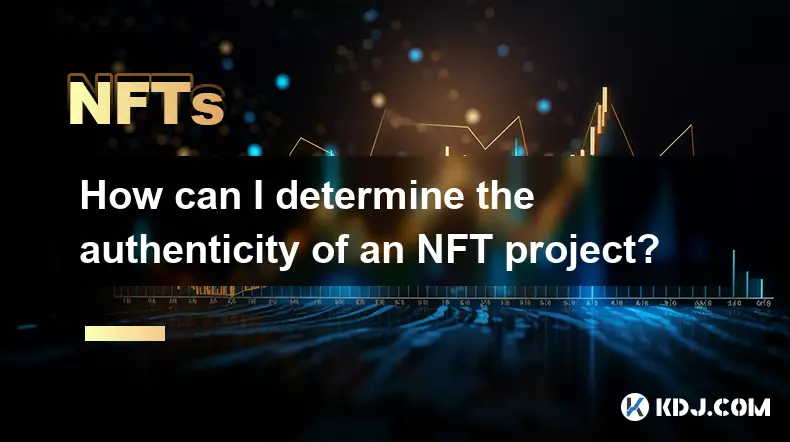
How can I determine the authenticity of an NFT project?
Sep 23,2025 at 05:18pm
Understanding the Project Team and Their Background1. Research the identities of the team members behind the NFT project. Verified social media profil...
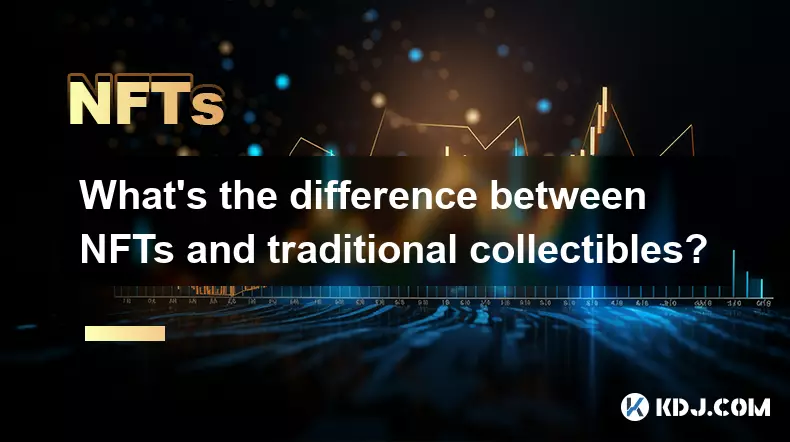
What's the difference between NFTs and traditional collectibles?
Sep 19,2025 at 12:55pm
Digital Ownership and Provenance1. NFTs are built on blockchain technology, which ensures transparent and immutable records of ownership. Every transa...
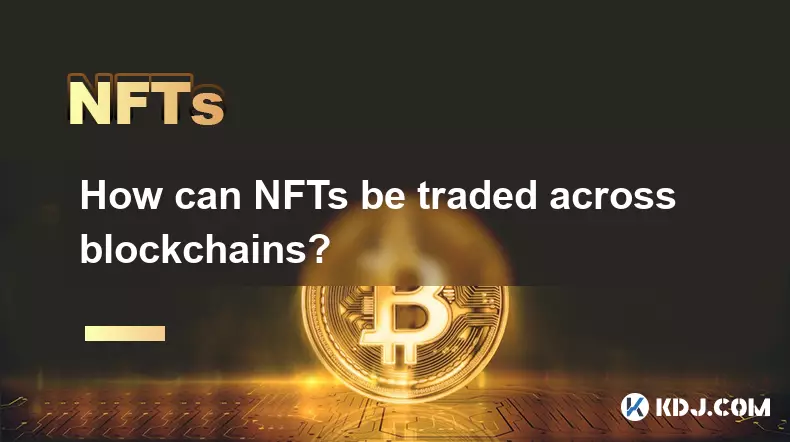
How can NFTs be traded across blockchains?
Sep 19,2025 at 12:00pm
Understanding Cross-Chain NFT Trading1. Non-fungible tokens (NFTs) are digital assets that represent ownership of unique items on a blockchain. Origin...
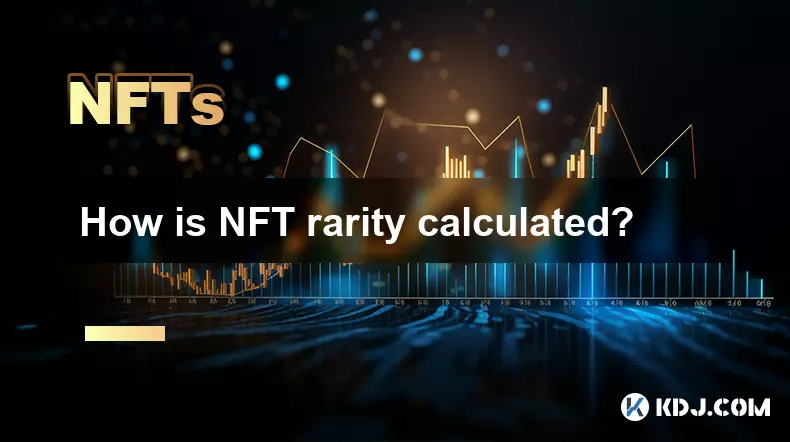
How is NFT rarity calculated?
Sep 18,2025 at 07:54pm
Understanding NFT Rarity Metrics1. NFT rarity is determined by analyzing the uniqueness of individual traits within a collection. Each NFT typically c...
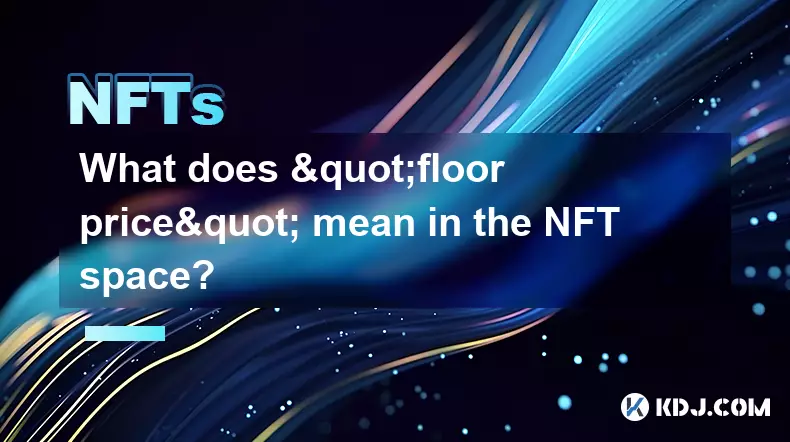
What does "floor price" mean in the NFT space?
Sep 22,2025 at 06:36am
Floor Price: A Core Metric in the NFT Marketplace1. The term floor price refers to the lowest current asking price for any item within a specific NFT ...

How do NFTs help content creators?
Sep 18,2025 at 08:00am
NFTs Empower Creators with Ownership and Monetization1. NFTs provide content creators with verifiable ownership of their digital works, ensuring authe...

How can I determine the authenticity of an NFT project?
Sep 23,2025 at 05:18pm
Understanding the Project Team and Their Background1. Research the identities of the team members behind the NFT project. Verified social media profil...

What's the difference between NFTs and traditional collectibles?
Sep 19,2025 at 12:55pm
Digital Ownership and Provenance1. NFTs are built on blockchain technology, which ensures transparent and immutable records of ownership. Every transa...

How can NFTs be traded across blockchains?
Sep 19,2025 at 12:00pm
Understanding Cross-Chain NFT Trading1. Non-fungible tokens (NFTs) are digital assets that represent ownership of unique items on a blockchain. Origin...

How is NFT rarity calculated?
Sep 18,2025 at 07:54pm
Understanding NFT Rarity Metrics1. NFT rarity is determined by analyzing the uniqueness of individual traits within a collection. Each NFT typically c...

What does "floor price" mean in the NFT space?
Sep 22,2025 at 06:36am
Floor Price: A Core Metric in the NFT Marketplace1. The term floor price refers to the lowest current asking price for any item within a specific NFT ...

How do NFTs help content creators?
Sep 18,2025 at 08:00am
NFTs Empower Creators with Ownership and Monetization1. NFTs provide content creators with verifiable ownership of their digital works, ensuring authe...
See all articles























